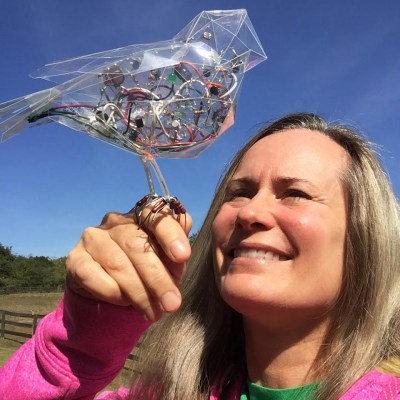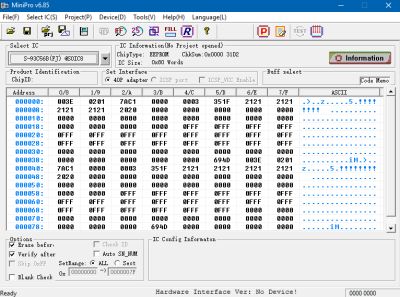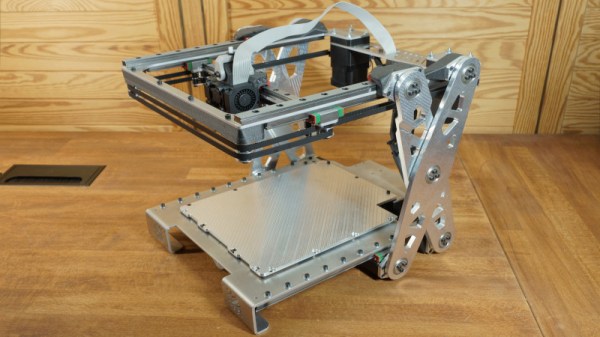Four weeks from today the Hackaday Superconference comes alive for the fifth year. From engineering in challenging environments to elevating the art form of electronics, here are nine more talks that will make this a year to remember.
In addition to the slate of speakers below there are three other announcements, plus workshops. Jeroen Domburg (aka Sprite_TM) is designing this year’s badge based around a beefy FPGA running a RISC-V core and using open source synthesis tools. We’ll have more on that soon, but if you just can’t wait, check out the expansion board spec he just published, and join the conference chat room for the inside track. Badge hacking is sure to be the liveliest we’ve ever seen.
Tickets are sold out but you can still get on the waiting list and hope that one becomes available. If you are holding onto one of these hot commodities but are unable to use it, please return your ticket so that we can get it to someone waiting with their fingers crossed.
The Talks (Part Four of Many)

Laurel Cummings
When it Rains, It Pours
Over the last two years my work has been beyond ordinary, building and prototyping in strange locations like being stranded on a sailboat in the Atlantic Ocean, teaching US Marines in Kuwait, and building fuel gauge sensors for generators for vital systems in North Carolina post hurricane Florence. Some of the big lessons I’ve learned are about how to source materials and supplies in weird places, like finding potentiometers in the backwoods of North Carolina when Amazon cannot physically deliver across flooded highways, how to find welding gas in Kuwait City (and how a local chef could possibly be your best bet), or how far you can get with an O’Reilly’s Auto Parts store near the city docks. These situations help you really see the “engineer creep” that can happen to a project. I’ve learned that when you’re in high-risk situations, you really should stop caring about whether the edges of your 3D print are chamfered. In fact, version 1 of the hurricane fuel gauge sensor was demonstrated while being housed inside an elegant, tasteful sandwich baggie.

Angela Sheehan
Building Whimsical Wearables: Leveling Up Through Playful Prototyping
Whether it’s for a theme party, Halloween, cosplay, or That Thing in The Desert, designing wearables for whimsical self expression presents a great opportunity to challenge yourself as a maker, wearer, and collaborator. As an artist and designer who crash landed into a career in tech, I’ve found that imposter syndrome can often place limits on what feels personally achievable from an electronics and programming standpoint. Recontextualizing a project to shift the focus from ‘wearable tech hardware endeavor’ to ‘quirky mixed media experiment in personal styling’, I’ve created a safe space to play and try new things just outside my skill set and produced some of my most technically complex and polished personal work. Take a journey with me through the process of conceptualizing and building my Color Stealing Fairy project, an exercise in iterative design and upgrading an interactive wearable project over the course of two years and counting.

Michael Ossmann and Kate Temkin
Software-Defined Everything
The popularity of Software-Defined Radio (SDR) has led to the emergence of powerful open source software tools such as GNU Radio that enable rapid development of real-time Digital Signal Processing (DSP) techniques. We’ve used these tools for both radio and non-radio applications such as audio and infrared, and now we are finding them tremendously useful for diverse sensors and actuators that can benefit from DSP. In this talk we’ll show how we use the open source GreatFET platform to rapidly develop an SDR-like approach to just about anything.

Kelly Heaton
“Hacking Nature’s Musicians” (or, “The Art of Electronic Naturalism”)
The general lack of acceptance of electronic art results from a scarcity of critics, curators, collectors, and grantors who understand electronic media, compounded by a cultural gap between the artistic and engineering communities. In order to solve this problem, we must stretch our comfort zone and vocabularies to have a respectful, enlightening conversation with people with different educational backgrounds. In this talk I’ll discuss my wonderment at the simple, analog circuit designs that mimic life-like behavior such as chirping crickets and singing birds. This will include discussion of various schematics and demonstrations of a small. along with an abbreviated survey of my work to-date.

Jasmine Brackett
Setting your Electronics Free
In this panel we’ll discuss the key ways to get your projects from your workshop into the hands of the first few users, and what you can do to scale up from there. We’ll talk about common pitfalls, and also what are the best resources to draw upon.

David Williams
MicroFPGA – The Coming Revolution in Small Electronics
Big FPGA’s are awesome. They’re doing what they’ve always done, enabling AI, signal processing, military applications etc. However, there is a new possibility emerging – FPGA’s for small applications – which is quite possibly even more significant. Using open source tools, cheap flexible development boards, and new libraries, designers have a whole new set of options, creating incredibly high performance, flexible, low power projects and products.

Nick Poole
Boggling the Boardhouse: Designing 3D Structures, Circuits, and Sensors from PCBs
The presentation will be a series of design features or techniques with a few minutes of exploration into the ‘gotchas’ of each, as well as example layouts in EAGLE and physical examples. I’d like to cover as many different techniques as I can cram into 30 minutes, including bringing weird shapes into EDA, the inside corner problem caused by tab and slot, fillet soldering, stacking boards, imitating model sprues with mouse bites, manipulating the mask layer for custom displays, bendy tab buttons, working rotary encoder, and ergonomic design for handheld PCBs.

Ted Yapo
Towards an Open-Source Multi-GHz Sampling Oscilloscope
Tektronix designed a 14.5 GHz sampling oscilloscope in 1968. With the easy multi-layer PCB designs, tiny surface-mount parts, blazingly fast semiconductors, and computer horsepower available to the individual designer today, can a similar sampling head be re-created inexpensively with common, off-the-shelf components? Should be easy, right? It’s not. In this talk, I’ll discuss progress towards an open-source GHz+ sampling oscilloscope, including a lot of dead ends, plus some very promising leads.

Jeroen Domburg
Building the Hackaday Superconference Badge
The tradition of the Hackaday Supercon badge is to build something unlike any Supercon badge that came before. This year’s badge has an FPGA as its central component, and this comes with some extra challenges: the FPGA only comes in a BGA package with a whopping 381 pads to solder, and instead of just referring to the datasheet of the SoC to write the badge software, the SoC itself had to be written first. I will discuss the development process of the badge, as well as the many challenges encountered along the way.
Keep Your Eye on Hackaday for the Livestream
The speakers you’ll see at Supercon have an amazing wealth of experience and we can’t wait to see their talks. But even if you couldn’t get a ticket, that doesn’t mean you have to miss out. Keep your eye on Hackaday for a link to the livestream which will begin on Saturday, November 16th.

















